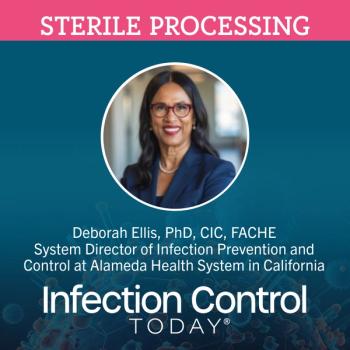
What’s in an Egg: The Age-Old Vaccine Production Method Lives On
For more than 80 years, the humble chicken egg has quietly powered one of modern medicine’s most vital defenses: vaccines. Even in an age of recombinant DNA, mRNA platforms, and cell-based innovations, more than 80% of the world’s influenza vaccines still begin in an egg. The process is time-tested, affordable, and reliable—but also imperfect. read this to learn more.
For over 8 decades, chicken eggs have been at the heart of vaccine production. While newer technologies for vaccine development exist, egg-based vaccines still account for over 80% of influenza (flu) vaccines produced globally.1 Egg-based vaccine technology goes beyond seasonal flu shots and nasal sprays to include vaccines for yellow fever and Q fever. Among these, the flu vaccines are the most commonly used because of the recurring threat of seasonal influenza.
But why do chicken eggs remain so vital in vaccine production in the modern era of genetic engineering and next-level science? Is it because of the cost, availability, or simply a case of old habits dying hard?
Why Chicken Eggs are Used in Vaccine Production
In the 1930s, scientists discovered that embryonated eggs could be used to grow influenza viruses. This breakthrough set the stage for egg-based vaccines, a practice that continues to this day.
Viruses require a biological environment for replication, and the egg was an ideal choice, especially in early times. It provides the nutrients necessary for viral growth, and by adjusting conditions such as temperature and humidity, scientists can optimize viral replication.
Egg-based vaccine production has stood the test of time. It is a well-understood process, with years of successful use. Researchers and industry players are familiar with the method, and the vast amount of available data makes it an easy choice compared to newer technologies.
Another advantage is cost: Producing vaccines in eggs is cheaper than using cell cultures or recombinant technologies. This makes eggs a practical option for large-scale vaccine production.
A Glimpse at the Process of Vaccine Development Using Eggs
The process begins with incubating fertilized eggs and inoculating them with the target virus. The infected eggs are maintained at optimal temperatures to allow viral propagation, and antibiotics are usually added to prevent bacterial contamination.
After 2 to 3 days, the virus-rich allantoic fluid is harvested. The viruses are then inactivated using chemical agents such as formaldehyde, β-propiolactone, or binary ethylenimine, each requiring specific conditions to ensure complete inactivation.
The viral particles are then concentrated, purified, and sterile processed before packaging for administration.
How Effective are Egg-based Vaccines in Rapid Pandemic Response?
Scientists predict that pandemics with mortality potential similar to COVID-19 could occur every 33 to 50 years.2 Can egg-based vaccines meet the demands of such emergencies?
For context, egg-based influenza vaccines take 6 to 8 months to produce under World Health Organization (WHO) guidelines. This extended timeline is ill-suited for pandemic control, where rapid vaccine availability is critical. Viruses associated with pandemics often mutate rapidly, leaving vaccines playing catch-up. There is no doubt that mRNA vaccines, which take about 1 to 2 months to produce, came into the picture during the COVID-19 pandemic.
Experience also highlights challenges with egg-based vaccines. For example, during the 2010 to 2011 flu season, the vaccine strain differed from the circulating virus, significantly reducing effectiveness. Such mismatches during a pandemic could have catastrophic consequences.3
Limitations of Egg-based Vaccines
The egg-based vaccines have some shortfalls both terms of resources needed and the quality of the end product.
Supply Chain
Egg-based production requires a steady supply of fertilized eggs. For influenza alone, vaccine production capacity is about 1.53 billion doses annually, which consumes millions of eggs. Therefore, disruptions in supply chains could threaten vaccine availability.1
Egg Adaptation
Viruses grown in eggs can mutate to better adapt to avian cells. Unfortunately, this may reduce their affinity for human receptors, lowering vaccine effectiveness. In some cases, egg adaptation can lead to loss of antigenicity. For instance, studies linked egg adaptation to reduced influenza vaccine effectiveness in the 2012 to 2013 flu season.4
Antigenic Drift
Viruses undergo frequent mutations, a process known as antigenic drift, which can quickly render vaccines less effective. Because egg-based production takes months, it often struggles to keep pace with these changes. The WHO selects strains annually for flu vaccines, but by the time vaccines are distributed, circulating strains may have already taken up different mutations.
Egg-Based Vaccines and Allergy Concerns
Egg-based vaccines raise questions among individuals with egg allergies. Fortunately, influenza vaccines usually contain only trace amounts of egg proteins, insufficient to cause reactions in most cases. Purification steps during manufacturing further reduce residual proteins.
Since the 2023 to 2024 season, the CDC has recommended that no additional precautions are necessary for people with egg allergies who receive flu vaccines, regardless of the severity of their previous egg allergy. Overall, seasonal flu vaccines have an excellent safety record. In a vaccine safety study, the rate of anaphylaxis was 1.35 per million doses.5
However, individuals with allergies to other vaccine components should avoid vaccination and seek specialist consultation.
On the other hand, yellow fever and Q fever vaccines contain relatively higher amounts of egg protein. Therefore, it is recommended that people with severe egg allergies consult a specialist before getting these vaccines.
All vaccines should be administered in settings equipped to recognize and manage allergies, in case an event requiring medical attention occurs.
Alternatives to Egg-Based Vaccines: Cell Culture-Based and Recombinant Vaccines
Cell culture–based and recombinant vaccines offer promising alternatives to the egg-based technology. With giant leaps being taken in vaccine production every day, it is evident that scientists are working towards reliable alternatives.6
For cell culture-based vaccines, viruses are grown in specific mammalian cells. After replication, viral antigens are harvested, purified, and packaged for use. Initially, some viruses used for cell culture-based production were propagated in eggs, but they are now exclusively grown in cell cultures.
Recombinant vaccines use viral genetic material encoding the antigenic protein. The gene is inserted into a plasmid, expressed in host cells, and the antigen is then extracted, purified, and packaged.7
With these methods, vaccine manufacturers can bypass the need for eggs, enabling faster turnaround times. Recombinant vaccines are particularly efficient since they do not require candidate vaccine viruses. Additionally, they avoid egg adaptation issues, often resulting in higher vaccine effectiveness.
However, these alternatives are more expensive than egg-based vaccines. While they guarantee faster production, the resources required can be out of reach, especially for developing nations that do not have access to even the cheaper egg-based vaccine production infrastructure.
While newer technologies produce viral strains very similar to human strains, there is still room for variation, especially with cell culture-based vaccines, which can be affected by mutations in host cells. Moreover, some cell culture-based technologies yield low viral titers.
Conclusion
The chicken egg remains a cornerstone of vaccine production. Its role as a medium for viral propagation is simple yet critical. Even as newer technologies advance, the egg continues to hold value due to its proven safety, cost-effectiveness, and historical success. While the future may lean more heavily toward cell-based and recombinant platforms, more work is still needed in research and improved efficiency to achieve high production rates with the alternative methods.
References
- Despite global influenza vaccine production remaining steady, production and distribution challenges remain. World Health Organization. March 25, 2025. Accessed September 4, 2025.
https://www.who.int/news/item/25-03-2025-despite-global-influenza-vaccine-production-remaining-steady--production-and-distribution-challenges-remain - Center for Global Development. Estimated future mortality from pathogens of epidemic and pandemic potential. Accessed September 4, 2025.
https://www.cgdev.org/sites/default/files/estimated-future-mortality-pathogens-epidemic-and-pandemic-potential.pdf - Choi YJ, Song JY, Wie SH, et al. Real-world effectiveness of influenza vaccine over a decade during the 2011-2021 seasons: implications of vaccine mismatch. Vaccine. 2024;42(26):126381. doi:10.1016/j.vaccine.2024.126381
- Skowronski DM, Janjua NZ, De Serres G, et al. Low 2012-13 influenza vaccine effectiveness associated with mutation in the egg-adapted H3N2 vaccine strain, not antigenic drift in circulating viruses. PLoS One. 2014;9(3):e92153. doi:10.1371/journal.pone.0092153
- Flu vaccines and people with egg allergies. CDC. Accessed September 4, 2025.
https://www.cdc.gov/flu/vaccines/egg-allergies.html - Boyce TG, Levine MZ, McClure DL, et al. Antibody response to sequential vaccination with cell culture, recombinant, or egg-based influenza vaccines among US adults. Hum Vaccin Immunother. 2024;20(1):2370087. doi:10.1080/21645515.2024.2370087
- Recombinant influenza (flu) vaccine. CDC. Accessed September 4, 2025.
https://www.cdc.gov/flu/vaccine-types/flublok-vaccine.html
Newsletter
Stay prepared and protected with Infection Control Today's newsletter, delivering essential updates, best practices, and expert insights for infection preventionists.




